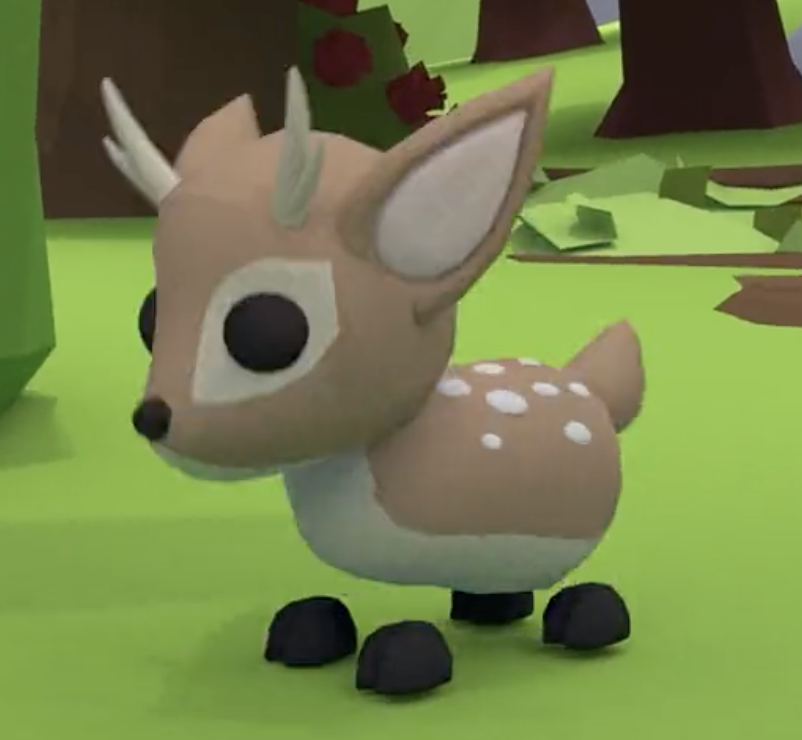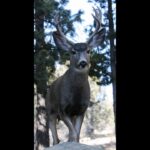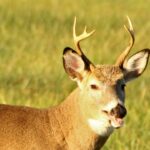Prepare to embark on an enchanting journey into the world of fallow deer pets. These graceful creatures, with their captivating presence and gentle nature, have captivated hearts for centuries. In this exploration, we’ll delve into their fascinating characteristics, delve into the intricacies of their care, and uncover their rich history and cultural significance.
From their distinctive spotted coats to their elegant antlers, fallow deer exude an undeniable charm. Their social nature and playful demeanor make them endearing companions, while their adaptability and hardiness render them suitable for a variety of environments. As we explore their specific care requirements, you’ll discover the essentials of providing a nurturing and fulfilling life for these magnificent animals.
Fallow Deer Overview

Fallow deer are known for their elegant appearance, characterized by spotted coats, distinctive antlers, and graceful movements. They are relatively small deer, with males typically weighing between 130-220 pounds and females weighing between 60-100 pounds.
Fallow deer exhibit sexual dimorphism, with males being larger and having more prominent antlers than females. Their coats are typically a reddish-brown color with white spots, although variations exist, including melanistic (black) and albino (white) individuals.
Fallow deer are native to Europe and Western Asia but have been introduced to various regions worldwide. They prefer habitats with a mix of open grasslands, woodlands, and access to water sources.
Fallow deer are social animals that live in herds. They have a well-defined social hierarchy, with dominant males leading the group. Their reproductive cycle is seasonal, with breeding typically occurring in the fall. Females give birth to a single fawn after a gestation period of around 230 days.
Physical Characteristics
- Average weight: 130-220 pounds (males), 60-100 pounds (females)
- Coat color: Reddish-brown with white spots (variations exist)
- Antlers: Males have prominent antlers with multiple points
- Body length: 4-6 feet
- Shoulder height: 2-3 feet
Behavior
- Social animals that live in herds
- Well-defined social hierarchy
- Grazers that feed on grasses, leaves, and twigs
- Nocturnal or crepuscular, most active at dawn and dusk
- Excellent swimmers
Habitat
- Prefer habitats with a mix of open grasslands, woodlands, and water sources
- Found in Europe, Western Asia, and introduced to various regions worldwide
- Can adapt to a range of habitats, including forests, shrublands, and agricultural areas
Reproductive Cycle
- Breeding season: Fall
- Gestation period: Around 230 days
- Typically give birth to a single fawn
- Fawns are born with spots that fade as they mature
Social Structure, Fallow deer pet
- Dominant males lead the herd
- Females and young form smaller groups within the herd
- Bucks establish territories during the breeding season
- Bucks engage in ritualized fights to establish dominance
Fallow Deer as Pets

Fallow deer, with their gentle nature and captivating appearance, have garnered interest as potential pets. However, before embarking on this journey, it’s crucial to consider the suitability of these animals as companions and the legal and ethical implications of keeping them in captivity.
Additionally, understanding their specific care requirements is paramount for their well-being.
Legal and Ethical Considerations
Keeping fallow deer as pets is subject to legal regulations and ethical considerations. In some regions, it may be illegal to possess them without proper permits or licenses. Additionally, the ethical implications of keeping wild animals in captivity must be carefully weighed, ensuring their welfare and minimizing potential risks to both the animals and the community.
Housing Requirements
Fallow deer require spacious enclosures with ample room to roam and express their natural behaviors. The enclosure should be well-fenced to prevent escapes and provide protection from predators. It should also include areas for shelter, shade, and feeding. Natural vegetation, such as grasses, shrubs, and trees, should be provided to stimulate their foraging instincts and create a natural habitat.
Nutrition
Fallow deer are primarily herbivores and require a balanced diet consisting of hay, grass, and browse. They may also consume fruits and vegetables as treats. It’s important to provide a constant supply of fresh water.
Fallow deer make great pets for deer enthusiasts who want a smaller deer. They’re smaller than other deer species and can be kept in a backyard, provided that there’s ample space for them to roam. They are known to be friendly and curious animals, but like all deer, they can be flighty and skittish if they feel threatened.
If you’re interested in learning more about fallow deer and their care, check out this article . It provides a comprehensive overview of the species, including their history, behavior, and diet. It also discusses the challenges of keeping fallow deer as pets and offers tips on how to provide them with the best possible care.
Veterinary Care
Regular veterinary checkups are essential for maintaining the health of fallow deer. They require vaccinations, deworming, and routine examinations to detect and treat any health issues promptly. It’s recommended to consult with a veterinarian experienced in the care of exotic animals to ensure proper medical attention.
Health and Welfare of Fallow Deer
Fallow deer, like all animals, are susceptible to various health issues and diseases. Understanding these health concerns and implementing preventive measures are crucial for their well-being and longevity.
Common Health Issues
- Liver fluke:Parasitic infection caused by flatworms that can lead to liver damage and anemia.
- Johne’s disease:Chronic bacterial infection affecting the digestive system, resulting in weight loss and diarrhea.
- Footrot:Bacterial infection of the hooves, causing lameness and discomfort.
- Tuberculosis:Infectious disease affecting the lungs, lymph nodes, and other organs.
Preventive Measures and Treatment
Preventive measures are essential to minimize the risk of health issues. These include:
- Regular deworming to prevent liver fluke and other parasitic infections.
- Maintaining a clean and dry environment to reduce the risk of footrot and other bacterial infections.
- Implementing biosecurity measures to prevent the introduction of diseases from outside sources.
If health issues do arise, prompt treatment is crucial. Veterinarians can diagnose and prescribe appropriate medications, such as antibiotics for bacterial infections or antiparasitics for parasitic infections.
Importance of Veterinary Checkups and Vaccinations
Regular veterinary checkups are essential for early detection and treatment of health problems. Veterinarians can also administer vaccinations to protect fallow deer from preventable diseases such as tetanus and rabies.
Breeding and Conservation

Fallow deer breeding in captivity employs various techniques to ensure genetic diversity and preserve the species. Captive breeding programs play a crucial role in maintaining genetic diversity and supporting conservation efforts.
Fallow deer make great pets, but it’s important to remember that they are still wild animals. This was recently highlighted when a deer attacked a kid in Pennsylvania. The child was playing in his backyard when the deer charged at him, knocking him to the ground and injuring his leg.
While fallow deer are generally gentle creatures, they can become aggressive if they feel threatened. If you’re considering getting a fallow deer as a pet, be sure to do your research and take precautions to keep your family safe. Deer attacks kid
Techniques for Breeding Fallow Deer in Captivity
Controlled breeding programs involve selective breeding to enhance desirable traits, such as coat color, antler size, or disease resistance. Artificial insemination and embryo transfer are employed to facilitate breeding and introduce new genetic lines.
Genetic Management and Conservation Efforts
Genetic management strategies aim to prevent inbreeding and maintain genetic diversity within captive populations. This involves monitoring genetic relationships, implementing rotational breeding systems, and introducing new individuals from different genetic backgrounds.
Role of Captive Breeding Programs
- Preservation of Genetic Diversity: Captive breeding programs provide a controlled environment to preserve genetic diversity, which is vital for the species’ resilience and adaptability.
- Reintroduction and Supplementation: Captive-bred individuals can be released into the wild to supplement or reintroduce populations, enhancing genetic diversity and population viability.
- Research and Monitoring: Captive breeding programs facilitate research on fallow deer biology, behavior, and conservation genetics, contributing to the species’ conservation and management.
Fallow Deer in History and Culture

Fallow deer have played a significant role in human history and culture, featuring prominently in hunting, symbolism, and mythology. Their elegant appearance and distinctive antlers have captured the attention of artists and storytellers for centuries.
Hunting and Symbolism
Fallow deer have been hunted for their meat and antlers since ancient times. In medieval Europe, they were a prized quarry for noblemen and were often depicted in hunting scenes. The fallow deer’s antlers were also used as symbols of power and fertility.
Mythology and Art
In Greek mythology, the fallow deer was associated with the goddess Artemis, who was known for her hunting prowess. In Celtic mythology, the deer was a symbol of the Otherworld and was often depicted in carvings and artwork. Fallow deer have also been featured in paintings, sculptures, and other forms of art throughout history.
Artistic Representations
One of the most famous artistic representations of fallow deer is the “Stag at Bay” by the French painter Eugène Delacroix. This painting depicts a majestic stag facing down a pack of hounds, symbolizing the struggle between man and nature.
Other notable artistic representations of fallow deer include the “Fallow Deer” by the Dutch painter Paulus Potter and the “Deer Park” by the English painter George Stubbs.
Outcome Summary
Our exploration of fallow deer pets has unveiled the multifaceted nature of these enchanting creatures. As we bid farewell to this captivating journey, let us cherish the profound connection between humans and animals, and strive to preserve the well-being and beauty of these remarkable species for generations to come.
FAQ Section: Fallow Deer Pet
Are fallow deer legal to keep as pets?
Legality varies by location. Research local regulations thoroughly before considering a fallow deer as a pet.
What is the average lifespan of a fallow deer?
In captivity, fallow deer can live up to 15-20 years with proper care.
What is the temperament of fallow deer?
Fallow deer are generally docile and curious, but can become territorial during mating season.





